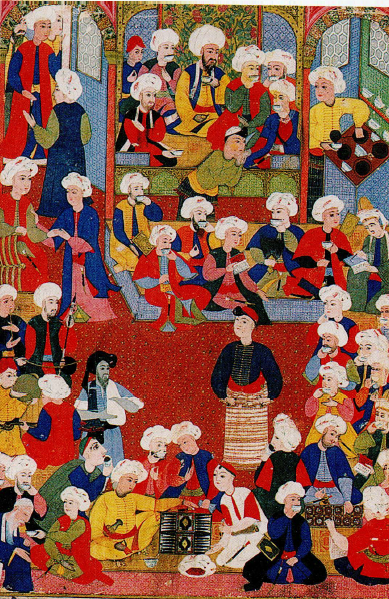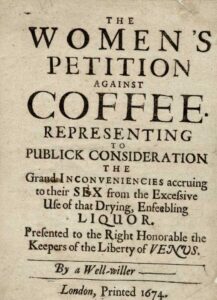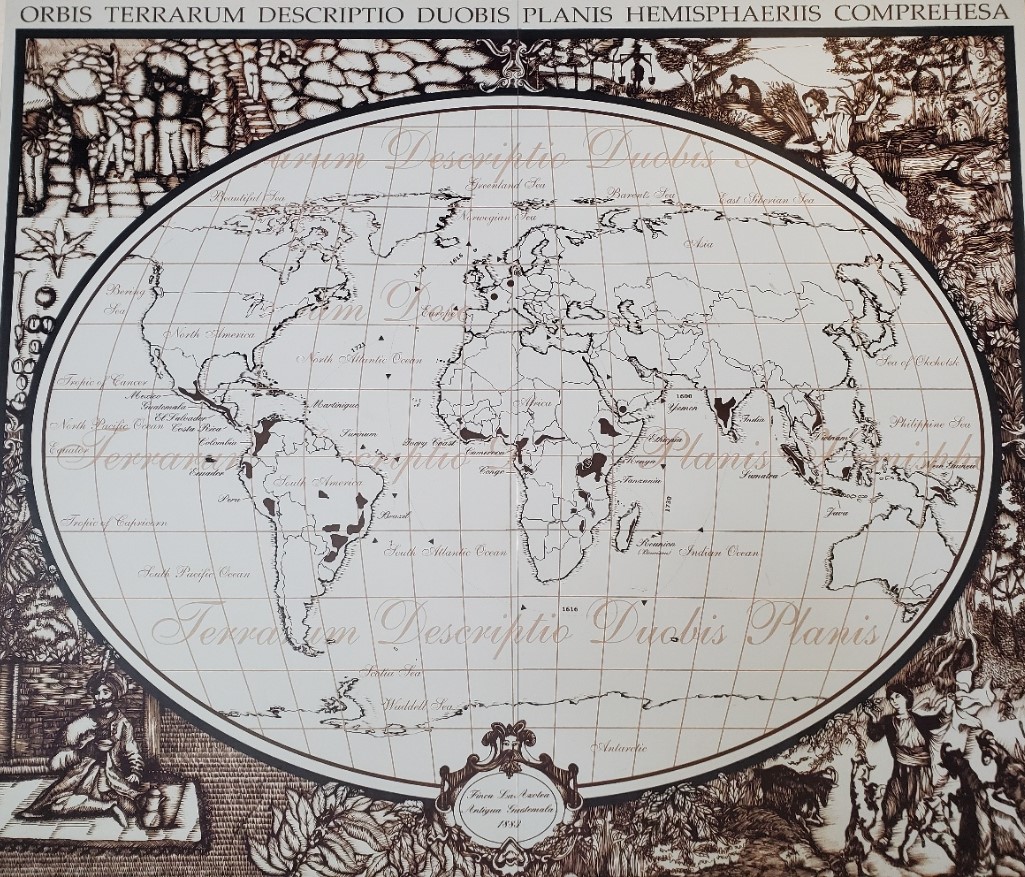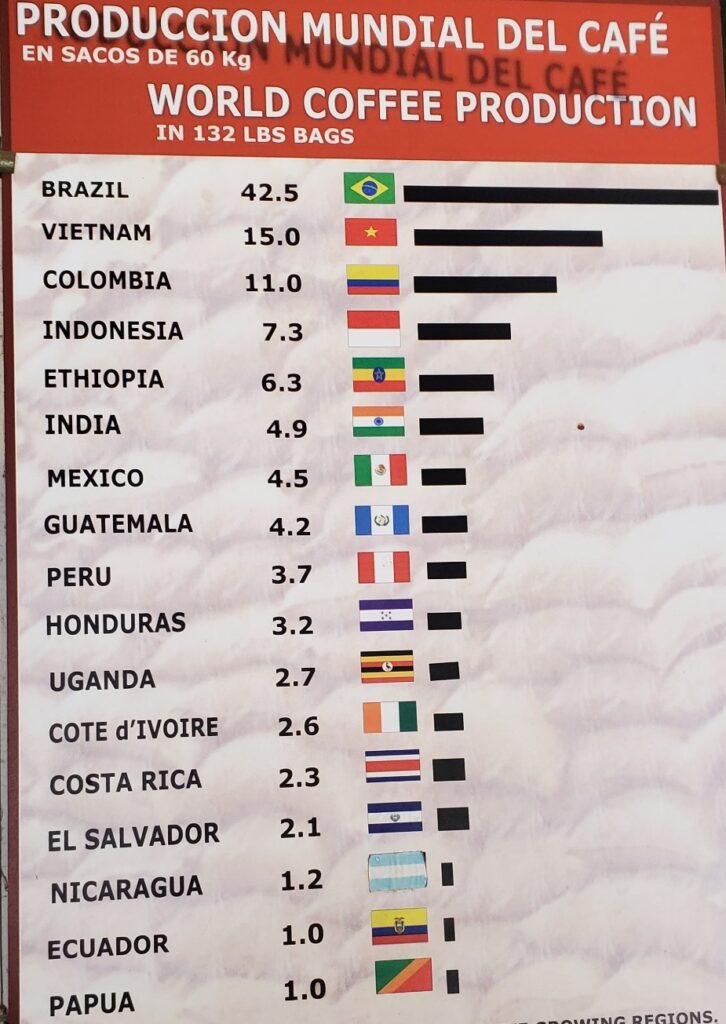You’ve probably watched the FTX commercial where Larry David for the first time tries coffee, I find it hilarious. This drink has become indispensable companion on Monday mornings for millions of people. In Internet there is a ton of information about coffee, the types, the methods, and so on. Today I’ll talk about less known coffee facts, the history of it and the numbers. Without further ado.
Did you know that appearance of coffee houses in Ottoman Empire caused a social change in Islamic world?
Which country is the biggest coffee supplier?
How coffee sobered up the Medieval Europe?
The informational base for this article was book of A History of Western Society by John P. McKay as well as data from a coffee plantation and museum at Cafe Azotea in Antigua, Guatemala.
Let’s start with the history
There are several accounts on when and who first “discovered” coffee beans, but generally the history starts either in Ethiopia or Arab peninsula. The origins can be traced to Yemen Sufis who found that this drink helped them to have trancelike concentration on God and stay awake (similar practice was common among Buddhists in Asia, which helped to popularize tea in the region).
Most Sufis weren’t dedicated religious holy man, but traders and merchants. In order to bring potential buyers in their stores, Sufis started incorporating the custom of offering the drink. As time passed, coffee spread in Arab world and first coffee houses were opened in Istanbul by 1555.
Coffee-houses provided space for sociability and place for conversations, there men could be entertained cheaply and more informally than at home. The initial pushback from the Ottoman officials, in time, yielded to eventual acceptance of the drink.
Coffee brought cultural changes in Islamic life, one of them is socializing was no longer confined to home. For further reading I recommend “Spilling the beans: The Islamic history of coffee” article written by Neha Vermani.
The history of these coffeehouses offers three connected insights: the emergence of the public sphere, the participation of larger sections of the population in the political lives of the early modern Islamic empires, and the hollowness of the allegations of despotism mounted on ‘Oriental’ societies by Western onlookers.
NEHA VERMANI postdoctoral Research Fellow on the Before ‘Farm to Table’: Early Modern Foodways and Culture project

In Medieval Europe one of the main food diets were bread and beer. For example, beer and lower alcohol content was consumed for breakfast. It could be said that arrival of coffee sobered up Europe.
By the middle of 17th century coffee appeared in England, the coffeehouses were called “Penny Universities”, because one penny granted entrance plus one cup of coffee. Many famous commercial houses like Lloyds of London have their origin in coffee houses.
In 1683 coffee comes to Austria. After their defeat in battle of Vienna, the fleeing Turks left bags of coffee behind. The Viennese thought it was camel fodder but Jerzy Kulczicki, (or in German, Georg Kolshitsky) spy who spent time in Istanbul, recognized the coffee beans and opened Vienna’s first coffee house.
In 1696 coffee arrives in Paris, introduced by Turkish ambassador, coffee quickly becomes fashionable. The coffee house Cafe Procope (place of meeting visionaries such as Rousseau and Diderot) is still open today.
Just count how many people drink coffee.
First Medieval Starbucks

Coffee houses became meeting place for merchants, intellectuals and artists where new political ideas were shared and discussed. In time this led to opposition from governments and church who feared the effects of exchange of ideas, and from tavern owners who felt the loss of business. Even women complained about the long hours their men spent in the coffee houses.
In 1938 Nestle brings powdered coffee, Nescafe, on the market and it instantly becomes a favorite because of speed and ease of preparation. 1971 First Starbucks specialty coffee shop open and begin to attract coffee drinkers to the atmosphere of coffee shops of yesterday.
What is coffee, anyway ?
Coffee is a bush like tree which can grow up to 8 feet or higher. Its leaves and berries contain up to 2% of caffeine, which is stimulant. First found in Ethiopia, its cultivation spread over tropical and subtropical lands. Coffee trees thrive in lands with well defined wet and dry seasons.
On the average one tree produces one pound of roasted coffee per crop.
The coffee plant takes three years to bear fruits and remains productive for over 20 years.
The jasmine like bloom appears two weeks after the first rain. Green beans take about nine months to ripen into bright red cherries. The harvested cherries are pulped and fermented in the wet mill and then dried on the sun. The dried beans, still covered with a parchment skin, are hulled and hand or machine sorted in the dry mill. Then they are bagged and made ready for shipment.

Coffee is grown in a belt from 25 degrees latitude south to 25 degrees north around the equator. In tropical areas coffee trees get frequent rains which cause multiple blooms and several harvests per year. Here Robusta type is mostly planted. In sub-tropical regions, a well defined dry/rainy seasons produce a single harvest – Arabica.

Some facts
Coffee contains hundreds of chemicals, but its main active ingredient is caffeine.
How much caffeine is there in a cup of coffee? The amount depends on several aspects.
First- the coffee variety. Arabica bean has 1-1,5% of caffeine. It provides high quality coffee and is other used for blending with the cheaper Robusta variety. Robusta bean has 2-2,5% of caffeine. This type grown principally in Brasil, West Africa, and Vietnam and provides less expensive but poorer quality coffee.
Second-is the preparation. Dark roasted coffee has less caffeine, finely ground coffee gives more caffeine.
Well next time enjoying a cup of coffee, my dear reader. I hope you’ll appreciate this drink, its rich story, traditions, and people stories.

